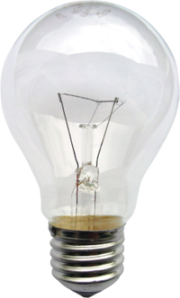This article is the centerpiece of the seminars we teach daily, and a central theme of Mike T Nelson’s “Metabolic Flexibility for High Intensity Athletes”. Click here for details. (including a testimonial from our most famous Lab Rat Elisabeth Akinwale)
Hormone balance, and the cycle by which our hormones are regulated, plays a major role in achieving optimal performance and body composition. I’ll get down to brass tacks and make myself clear: insulin and growth hormone play antagonist roles against one another. When one is elevated, the other will be low. That does not, however, mean that their functions are all that dissimilar; they’re both responsible for growth in different ways and looking at them as synergists is much more productive. We want to find a way to make the best of insulin’s ability to pull nutrients into cells, but we also want to elicit the muscular, skeletal and neurological growth that (as the name implies) growth hormone is responsible for. Intraday nutrient cycling (Carb Back-Loading) is the best way to do this. Understanding why is complicated as all heck, but we’ve tried to make it easy to digest (Get it? Digest? Haha?)
Before we continue, I am going to ask that you take a look at our articles on insulin and leptin, as well as the sleep tutorial. They’ll help you understand some of the terms in this section and get a better idea of what’s really going on behind the scenes.
Growth Hormone and IGF-1
Growth Hormone (GH) is a hormone responsible for cellular growth in the human body. Throughout the day, GH is synthesized, stored and secreted by the anterior portion of the pituitary gland. Factors such as low blood sugar, sleep, and exercise stimulate the hypothalamus to produce and release hormones that increase growth hormone synthesis and release in the pituitary gland. On the other hand, elevated blood levels of cortisol, glucose and even growth hormone itself decrease production and secretion. While GH is released into your bloodstream at fairly regular intervals (between 3-5 hours) the amount released is heavily dependent upon the factors I mentioned earlier in this paragraph. It’s safe to say, however, that for most of us, the majority of growth hormone secretion occurs during sleep. The result of these spikes tells the liver to increase production of IGF-1; this hormone is responsible for many of the same effects as GH.
IGF-1 (Insulin-like Growth Factor 1) is essentially just that; it’s a hormone that has similar properties and effects on the body (it even binds to the same receptors) as insulin, but it’s produced under completely the opposite circumstances. Whereas insulin (a hormone responsible primarily for nutrient translocation) is secreted by the pancreas in response to (among other things) elevated blood glucose levels, IGF-1 is secreted by the liver during periods of low blood sugar. In addition, a variation of IGF-1 called mechano-growth factor (MGF) is produced in response to intense exercise, like weight training or sprinting. MGF acts primarily upon skeletal muscle tissue to bind satellite nuclei into the muscle cells (sarcomere). This elicits growth of the myofibril, resulting in a stronger, larger, harder muscle. As we like to say, “A light bulb should have just gone off in your head.”
Making the Best of Things
Now that we’ve covered the basics of what these hormones are and what they do, let’s go over some real-world dietary strategies to maximize the benefits of both GH and insulin. To begin, you should understand that during sleep, you’ll eventually metabolize all of the food you’ve eaten and your blood glucose levels will drop. Over the next few hours, you’ll re-align your endocrine system based upon what you did during the day. By the time you’re getting ready to wake up, growth hormone will have been secreted in its largest pulse, and ghrelin (the hunger control hormone) will be high; your stomach will be telling you to wake up and eat something. Ghrelin stimulates production of cortisol to raise your blood pressure, make you more sensitive to epinephrine, free up energy throughout the body, and turn on gluconeogenesis to get some sugar to your brain. Cortisol levels will gradually decrease as you break down glycogen in your liver and muscles and before you know it, you’ll go through the whole cycle again; ghrelin levels will peak and you’ll get a small burst of growth hormone.
By skipping (really just delaying) breakfast and allowing your blood sugar (as well as your hormone balance) regulate on its own, you’ve set up a chain reaction. Although you’ve already maximized recovery and mobilized a bunch of fat by riding out the cortisol spike (cortisol is, after all, an anti-inflammatory), you’re now in control of your metabolism and you can go in one of two directions: towards fat loss and muscle gain, or growth of both fat and muscle tissue. This is the perfect time to have your first meal and make your decision (I think I know which one you’ll pick.) By keeping the carbs (and thus insulin) low, eating a healthy dose of fat and a modest amount of protein, you will turn on protein synthesis, mobilize fat, promote ketogenesis and maximize growth hormone secretion throughout the morning and afternoon. You’ll actually be using your body fat as energy to maintain or grow muscle. Whatever glucose your brain needs to do whatever it’s got to do, it will have available thanks to endogenous production in the liver. You’ll actually be using your body fat as energy to maintain or grow muscle. You could, alternatively, disregard the benefits of a low carb breakfast and have a big bowl of oatmeal with some bananas. It’s up to you!
When the evening rolls around and it’s getting dark, blood leptin levels will be at their lowest, and you should be ready to relax. While it may be time for you to rest, it’s time to grab hold of your metabolism and get that sucker moving again, and the best way to do it is to start eating carbohydrates to generate a surge of insulin. It’s important that you’re eating enough glucose along with your protein and fat; fructose will not do, as it skips the stages of glycolysis that actually elicit an insulin response in the pancreas. Sweet potatoes, bananas, and rice are your best friend. By sticking with these classics, you’ll turn on a downstream effect that will result in your fat cells signaling that they’re full; leptin secretion will peak, your pituitary gland will release serotonin (which will convert into melatonin, the “sleep” hormone) and you’ll pass out happy and satiated. Since you kept your food choices low carb throughout the day, you’ll be insulin sensitive and ready to soak up the glucose. By eating high glycemic and delivered the insulin spike in one fell swoop, your blood sugar levels will fall quickly during sleep. Before too long, the growth hormone bursts will begin, but they’ll be augmented by the insulin spike and subsequent drop of blood sugar levels below baseline.
What about Exercise? The Best of Both Worlds
If exercise increases GH but eating carbs spikes insulin levels, how can we justify eating a ton of carbohydrates after training? Don’t we want to take advantage of the growth hormone pulse? Of course we do, but since growth hormone levels spike and then quickly diminish, by the time you get home and you’re ready to have your post work-out meal, they will have returned to baseline. You have to remember that post-workout, your muscles don’t necessarily depend upon insulin to translocate nutrients; glucose transporters will have moved to the surface of the cell and you’ll get the sugar/water in without elevating insulin levels. If performance and growth are at the top of your list of desirable training outcomes, you should try to have a protein/carb shake immediately after (or even during) your workout. This shouldn’t be anything crazy: 25-50g of carbs from maltodextrin/dextrose, 5g of creatine and 10g of protein will work better than chugging a gallon Gatorade while you squat, so don’t go off the deep end.
When examining the complex relationships between hormones and how they affect our physiology, it may seem like you can’t win. Jacking up either GH or insulin may result in a quick surge of growth, but as soon as they peak, they’re back to normal…Or lower. As frustrating as that may seem, dipping below baseline will usually result in a super-compensatory reaction; a large insulin spike in the evening will equate to larger GH spikes throughout the day, after training, and during sleep. In contrast, you’ll see greater insulin sensitivity and utilization of glucose in the evening if you let you GH handle the anabolism in the morning and throughout the night. What seems like counterproductive behavior at first may be the ticket to where you want to go. It is possible to get the best of both worlds if you deploy intelligent strategies to your daily nutrition, sleep and exercise.







